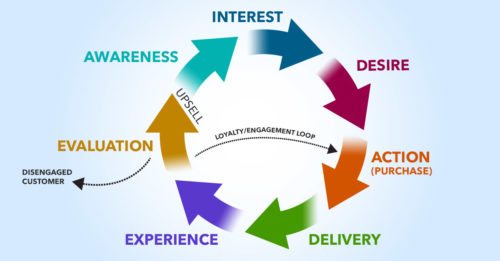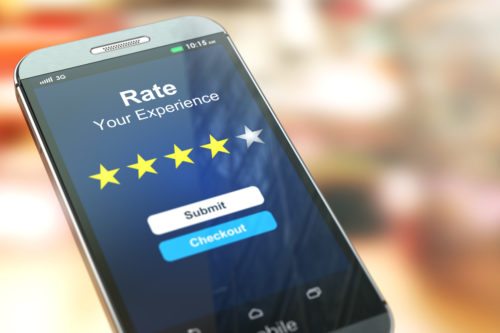There are several points in a customer’s post-sale journey marketers should take advantage of. It’s important to address these opportunities – post-sale marketing is cheaper and requires less time and effort. Post-sale marketing is not a new investment – it’s a way to maximize the return on investments you’ve already made on customer acquisition.
Due to the wide variation in customer lifecycle journeys, only you know exactly how to provide value after a sale is complete. But if you look at a map of the post-sale journey, there are three general stages where B2B organizations have plenty of opportunity to engage, educate and respond to their customers:
 1 Delivery of Goods and Services
1 Delivery of Goods and Services
No matter what you sell, at some point a customer will receive it. The delivery of goods and services is the perfect time to begin engaging with customers. This could take the form of welcome messages, distinctive packaging or a million other things you can brainstorm on your own. But what’s important is that it’s personalized and the customer understands you’re opening an ongoing dialogue. This stage is where there are opportunities for creative businesses to tackle any feeling of disengagement their customers may have, and ultimately take the first step towards more post-sale revenue.
2 Experience of Goods and Services
After a customer receives your goods and services, they begin using them and get the full experience of what you have to offer. It’s at this point you can educate customers about how to get the most out of the products and services. You can educate them about other offers you may provide and/or explain how to make another purchase. You might even deliver content that educates them about broader industry trends and how it affects them. This may ease post-sale anxiety for customers, and help you position yourself as an industry expert and a reliable business partner.
 3 Evaluation of Goods and Services
3 Evaluation of Goods and Services
After a customer has used your goods and services, they will begin to evaluate the effectiveness of what you have sold them. The timing of this will vary greatly depending on your industry and individual sales cycle. But no matter what you sell, this part of the post-sale journey is perfect for collecting feedback, crafting customer retention metrics, and most importantly, acting on any response you get from customers. All of this will make your company appear involved and concerned with the customer’s experience. In their eyes, this provides additional value beyond the product and can help make their decision easier next time they need to make a purchase.
In the B2B sector, especially for small businesses, achieving ROI in marketing initiatives is crucial. You’ve already invested heavily in acquiring your current customers. Focusing on post-sale marketing maximizes the overall return on that investment.

